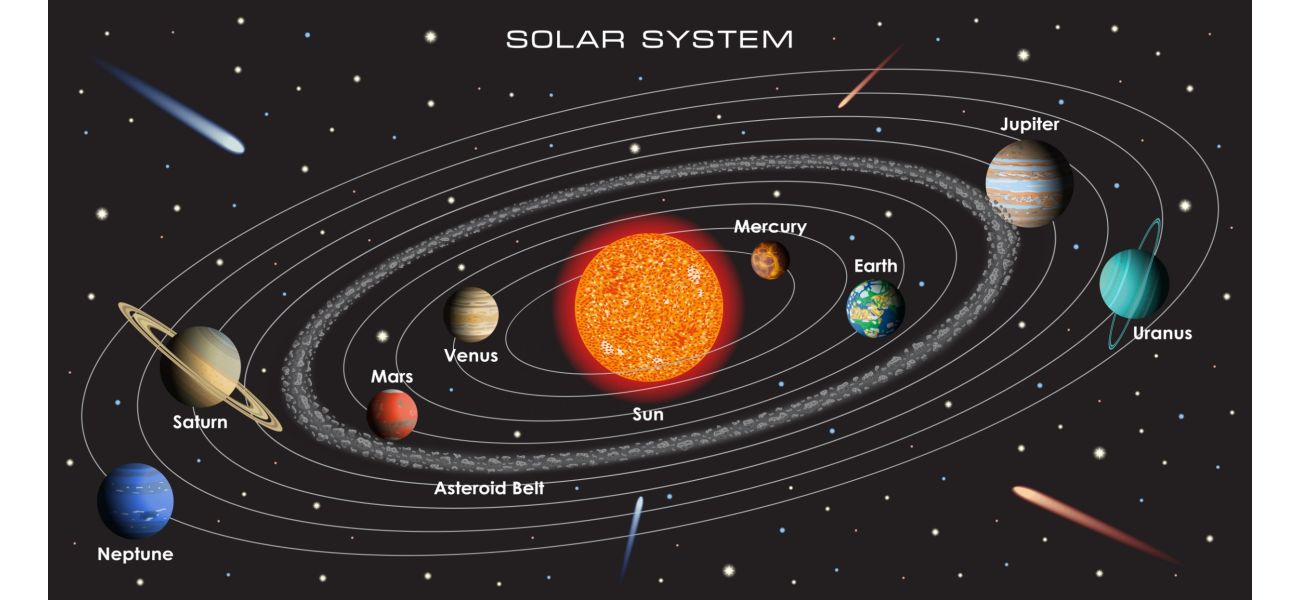'Asteroids the size of London buses, referred to as "vermin of the sky," have been discovered near Mars for the first time.'
Over 100 smaller asteroids were discovered, smaller than the 1km ones we could see before but still capable of causing damage.
December 10th 2024.

There are millions of asteroids that orbit the sun in a belt located between Mars and Jupiter. Recently, scientists have made a groundbreaking discovery by pinpointing "small" asteroids in this area for the very first time. These smaller asteroids, ranging in size from buses to stadiums, were previously undetectable using traditional methods. This new tracking technique not only expands our knowledge of the solar system, but it could potentially save us from being struck by these space rocks in the future.
Currently, it is challenging to determine the number of mid-sized asteroids that could potentially collide with Earth. Our monitoring systems are only capable of detecting larger asteroids when they are already on a collision course with our planet. However, a recent paper published in Nature has shed light on a new method of tracking "decameter" asteroids, the smallest ever identified in the main asteroid belt. These mid-sized rocks, as small as 10 meters in diameter, are comparable in size to a double-decker bus in London and can reach up to the size of several stadiums. While they may seem tiny compared to the asteroid that caused the extinction of the dinosaurs, they still have the potential to cause significant damage upon impact.
It's worth noting that we are aware of the giant "planet killers" in our vicinity, but it's the smaller, chunkier asteroids that are difficult to track. In the past, the smallest asteroid that could be detected in the asteroid belt was around 1 kilometer in diameter. However, lead author Artem Burdanov, a research scientist at MIT, explains that their new tracking method allows them to spot these small asteroids from much farther away, enabling more precise orbital tracking. This is crucial for planetary defense against potential asteroid impacts.
Interestingly, this breakthrough discovery came about while researchers were working on a different project: the search for exoplanets outside of our solar system that could potentially support life. The telescopes used to observe these distant planets were often disrupted by space noise, such as dust, debris, and asteroids. Co-author Julien de Wit explains that, for most astronomers, asteroids are seen as a nuisance that affects their data. However, this "annoying" feature actually led to this significant discovery.
Using images from NASA's James Webb Space Telescope, which were initially captured to search for signs of life around the TRAPPIST-1 star, the team was able to detect numerous small asteroids that were previously unknown. Some of these asteroids are suspected to be on a trajectory that could bring them close to Earth in the near future. Additionally, one of the detected asteroids was identified as a "Trojan," meaning it orbits Jupiter.
The frequency of asteroid impacts on Earth is a topic of interest. While a "planet killer" impact is predicted to occur only once every 100-500 million years, mid-sized asteroids are a more pressing concern. These "decameter" asteroids, measuring just tens of meters across, are more likely to escape the asteroid belt and become near-Earth objects. This can happen every few years, as demonstrated by the Tunguska, Siberia impact in 1908 and the Chelyabinsk, Urals asteroid that broke up in the sky in 2013. If these mid-sized asteroids were to hit a populated area, they could cause significant damage, making it essential to study them more closely.
According to the authors, this discovery has opened up a "totally new, unexplored space" in our understanding of the asteroids that constantly spin alongside us in the solar system. Astronomer Dr. Greg Brown from the Royal Observatory in Greenwich explains that there are still significant gaps in our knowledge of asteroids in our solar system. He adds that we are missing a large fraction of mid-sized asteroids, which measure up to approximately 400 meters in diameter. The European Space Agency also warns that there could be a significant number of unknown asteroids on potential collision courses with Earth that we are currently unable to detect.
In conclusion, this breakthrough discovery has given us a glimpse into the previously unknown world of small asteroids in the main asteroid belt. With continued research and advancements in tracking methods, we may soon have a better understanding of the asteroids that share our solar system and how we can protect ourselves from potential impacts.
Currently, it is challenging to determine the number of mid-sized asteroids that could potentially collide with Earth. Our monitoring systems are only capable of detecting larger asteroids when they are already on a collision course with our planet. However, a recent paper published in Nature has shed light on a new method of tracking "decameter" asteroids, the smallest ever identified in the main asteroid belt. These mid-sized rocks, as small as 10 meters in diameter, are comparable in size to a double-decker bus in London and can reach up to the size of several stadiums. While they may seem tiny compared to the asteroid that caused the extinction of the dinosaurs, they still have the potential to cause significant damage upon impact.
It's worth noting that we are aware of the giant "planet killers" in our vicinity, but it's the smaller, chunkier asteroids that are difficult to track. In the past, the smallest asteroid that could be detected in the asteroid belt was around 1 kilometer in diameter. However, lead author Artem Burdanov, a research scientist at MIT, explains that their new tracking method allows them to spot these small asteroids from much farther away, enabling more precise orbital tracking. This is crucial for planetary defense against potential asteroid impacts.
Interestingly, this breakthrough discovery came about while researchers were working on a different project: the search for exoplanets outside of our solar system that could potentially support life. The telescopes used to observe these distant planets were often disrupted by space noise, such as dust, debris, and asteroids. Co-author Julien de Wit explains that, for most astronomers, asteroids are seen as a nuisance that affects their data. However, this "annoying" feature actually led to this significant discovery.
Using images from NASA's James Webb Space Telescope, which were initially captured to search for signs of life around the TRAPPIST-1 star, the team was able to detect numerous small asteroids that were previously unknown. Some of these asteroids are suspected to be on a trajectory that could bring them close to Earth in the near future. Additionally, one of the detected asteroids was identified as a "Trojan," meaning it orbits Jupiter.
The frequency of asteroid impacts on Earth is a topic of interest. While a "planet killer" impact is predicted to occur only once every 100-500 million years, mid-sized asteroids are a more pressing concern. These "decameter" asteroids, measuring just tens of meters across, are more likely to escape the asteroid belt and become near-Earth objects. This can happen every few years, as demonstrated by the Tunguska, Siberia impact in 1908 and the Chelyabinsk, Urals asteroid that broke up in the sky in 2013. If these mid-sized asteroids were to hit a populated area, they could cause significant damage, making it essential to study them more closely.
According to the authors, this discovery has opened up a "totally new, unexplored space" in our understanding of the asteroids that constantly spin alongside us in the solar system. Astronomer Dr. Greg Brown from the Royal Observatory in Greenwich explains that there are still significant gaps in our knowledge of asteroids in our solar system. He adds that we are missing a large fraction of mid-sized asteroids, which measure up to approximately 400 meters in diameter. The European Space Agency also warns that there could be a significant number of unknown asteroids on potential collision courses with Earth that we are currently unable to detect.
In conclusion, this breakthrough discovery has given us a glimpse into the previously unknown world of small asteroids in the main asteroid belt. With continued research and advancements in tracking methods, we may soon have a better understanding of the asteroids that share our solar system and how we can protect ourselves from potential impacts.
[This article has been trending online recently and has been generated with AI. Your feed is customized.]
[Generative AI is experimental.]
0
0
Submit Comment




